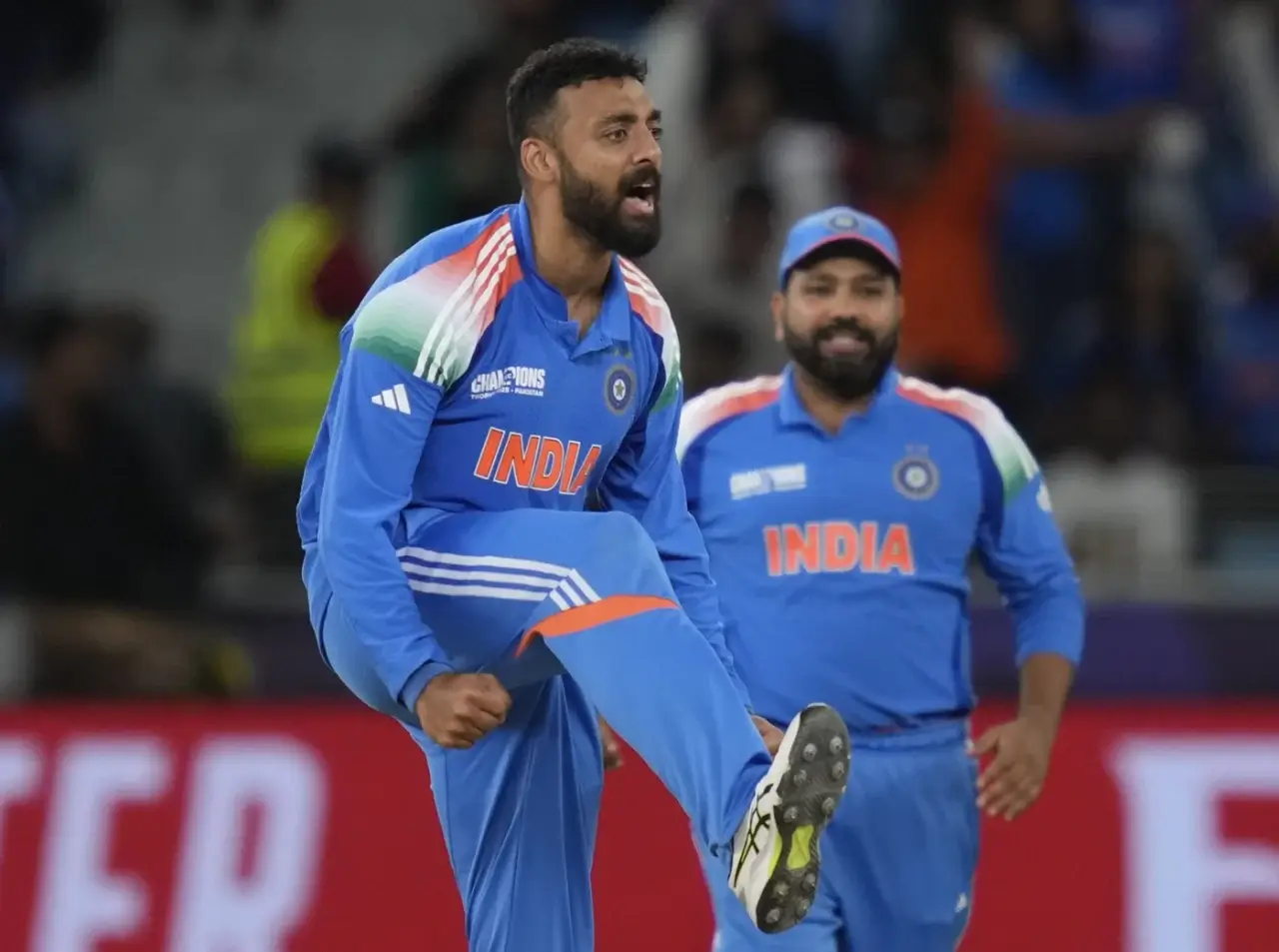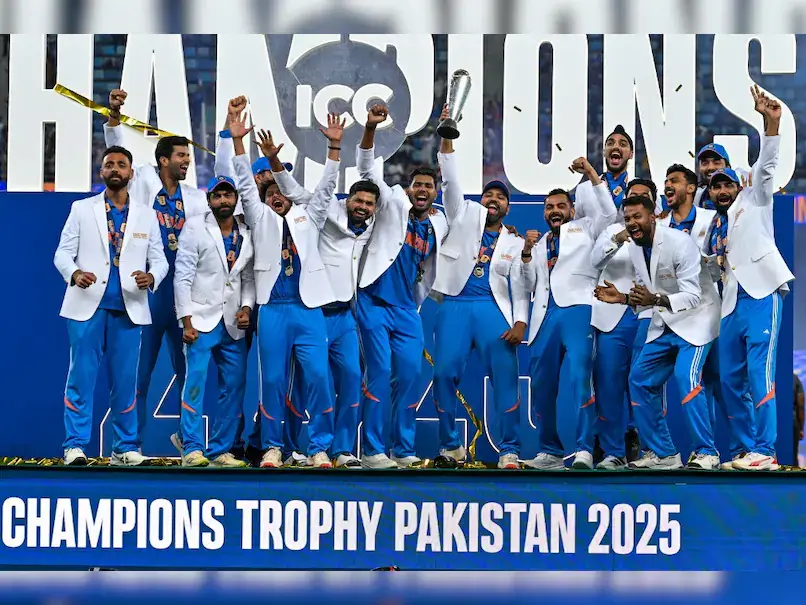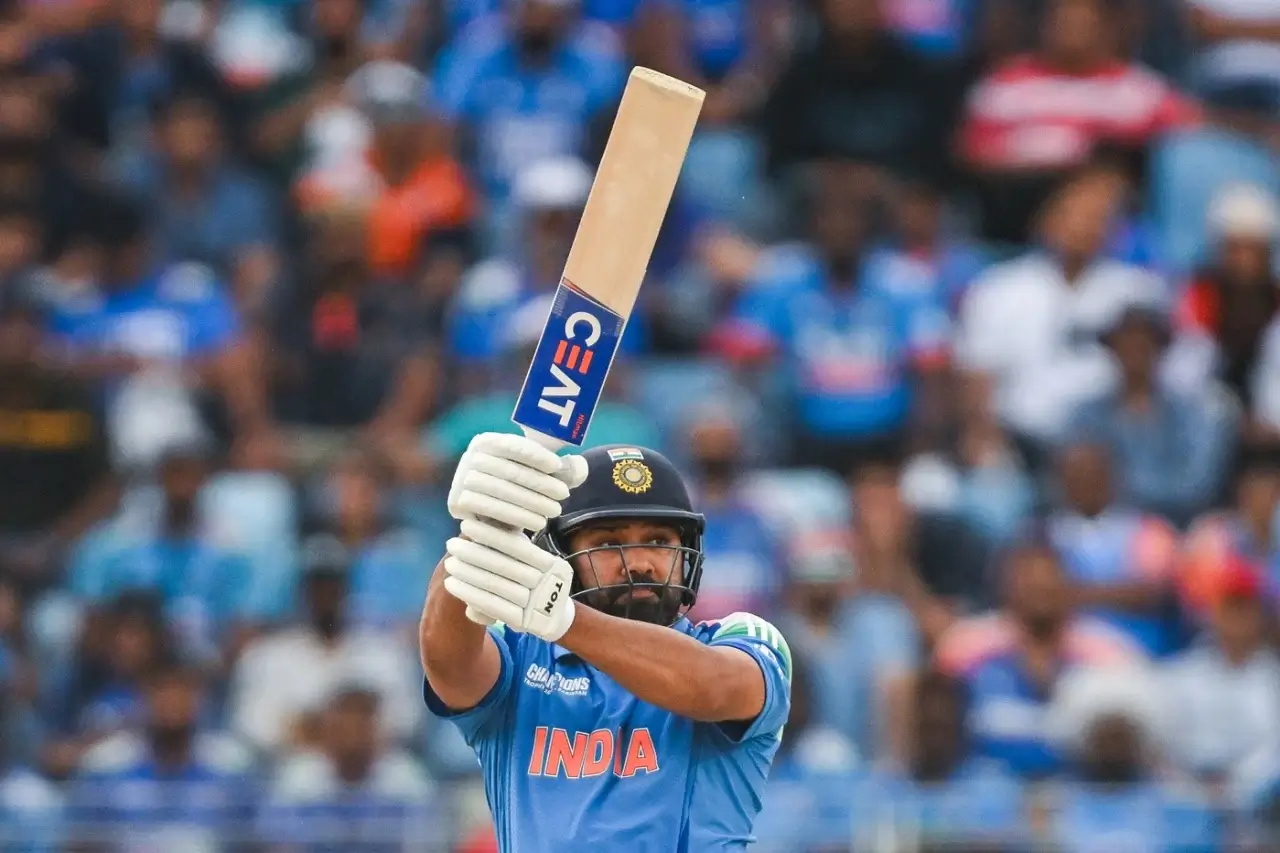India faced New Zealand in the Champions Trophy 2025 final on March 9. Losing 15 consecutive tosses, they showcased resilience in Dubai’s unpredictable conditions. Rohit Sharma’s explosive 76 set the tone for a clinical chase of 252. New Zealand posted 251/7, but their middle order crumbled against India’s spinners. With Matt Henry injured and Kane Williamson sidelined, New Zealand struggled. India’s deep batting and six bowling options proved decisive in the rematch of the 2000 final. This analysis highlights seven key areas where India outshone their rivals. Their unbeaten run in Dubai underlined a tactical masterclass. Let’s look at the points on How India Excelled Over New Zealand in the Champions Trophy 2025 Final.
1. Rohit Sharma’s Explosive Leadership Set the Tone
Rohit Sharma’s 76 off 83 balls ignited India’s chase with authority. He smashed seven fours and three sixes, racing to 50 in 41 balls. This aggressive start gave India 64/0 after 10 overs, unsettling New Zealand’s bowlers early. Despite losing 15 consecutive tosses, his captaincy adapted brilliantly to Dubai’s conditions. New Zealand’s decision to bat first yielded only 251, which Rohit exploited with intent against Australia in the semi-final match.
His 343rd ODI six underscored his dominance, trailing only Shahid Afridi’s 351. India’s required run rate stayed manageable, allowing calmness later. New Zealand’s Nathan Smith leaked 22 runs in two overs, unable to counter Rohit’s onslaught. This foundation showcased India’s resilience under pressure. Rohit’s tactical acumen outshone New Zealand’s cautious approach, proving decisive.
2. Depth in Batting Absorbed Early Setbacks
India’s batting depth shone despite losing Virat Kohli for 1 after Shubman Gill’s 31. Rohit Sharma’s 76 laid a platform, but the middle order stepped up seamlessly. Shreyas Iyer scored 48, stabilizing after two quick wickets at 106/2. Axar Patel’s 29 off 40 balls kept the chase on track with composure. KL Rahul (34*) and Ravindra Jadeja (9*) finished unbeaten, chasing 252 in 49 overs. New Zealand’s middle order faltered, managing 103/4 in overs 11-40. India’s lineup absorbed pressure, unlike New Zealand’s reliance on Daryl Mitchell’s slow 63. This depth turned potential collapse into a comfortable victory.
3. Spin Bowling Choked New Zealand’s Momentum

India’s spinners dominated, restricting New Zealand to 251/7 on a slowing Dubai pitch. Kuldeep Yadav took 2/40, dismissing Rachin Ravindra and Kane Williamson cheaply. Varun Chakravarthy’s 2/45 removed Will Young and Glenn Phillips, triggering a collapse. Ravindra Jadeja’s 10-0-30-1 spell included Tom Latham’s wicket, stifling the middle overs. New Zealand endured an 81-ball boundary drought from overs 14-27. They did it in the group games against New Zealand, where Varun Chkrawarthy took a 5-fer.
Team India bowled 30 overs of spin in the middle phase, a tactic last seen in 2002. New Zealand’s spinners, like Mitchell Santner (2/46), couldn’t replicate this control. India’s spin trio outclassed their counterparts, securing the edge.
4. Adaptability to Toss Disadvantage Triumphed
India lost 15 straight tosses, a 1-in-32,768 probability, yet remained unbeaten in Dubai. New Zealand chose to bat first, aiming for a big total but faltered. India’s six bowling options adjusted perfectly, keeping New Zealand to 251/7. Rohit Sharma’s aggressive 76 ensured the chase began ahead of the required rate.
Unlike the 2021 T20 World Cup, dew didn’t disrupt plans this time. New Zealand’s middle order couldn’t capitalize on India’s four dropped catches. India’s ability to chase under pressure showcased superior adaptability. This resilience turned a statistical anomaly into a winning formula.
5. Fielding Resilience Overcame Dropped Catches
India dropped four catches, including Rachin Ravindra twice, yet still restricted New Zealand effectively. Ravindra made only 37 despite reprieves, nullifying New Zealand’s chances to post a bigger total. New Zealand’s fielding lapses, like Daryl Mitchell dropping Gill on 7, proved costlier. India raced to 105/0 before Gill’s exit, exploiting every mistake.
New Zealand’s injury woes, with Matt Henry out after the semi-final match against South Africa. Kane Williamson, off-field, weakened their effort. India’s bowlers maintained pressure despite fielding errors, unlike New Zealand’s inability to capitalize. This resilience in chaos highlighted India’s superior execution under pressure.
The Timeline of The Final Match
| Time | Event | Details |
|---|---|---|
| 27m ago | India win the Champions Trophy with one over to spare | Ravindra Jadeja hits the final boundary to spark celebrations. KL Rahul and Ravindra Jadeja finish the chase. |
| 39m ago | New Zealand refuses to go down quietly | Hardik Pandya and KL Rahul add 38 in six overs, but Kyle Jamieson dismisses Pandya, leaving India needing 11 off 15. |
| 48m ago | Ravindra’s spell | Rachin Ravindra bowls a tight final over, with India needing 21 off 4 overs after Hardik Pandya hits a six. |
| 52m ago | Into the last five | India needs 32 off the last five overs, with Ravindra having one over left and Phillips having plenty of overs to bowl. |
| 1h ago | Santner’s tight spell | Mitchell Santner takes two wickets, and India needs 46 runs with five wickets remaining. |
| 1h ago | Bracewell celebrates with two wickets | Michael Bracewell celebrates taking the big wicket of Virat Kohli, and India needs 49 in 51. |
| 1h ago | Bracewell dismisses Axar Patel | Axar Patel, miscuing a shot, gets dismissed for 29, leaving India needing 49 in 51 balls. |
| 1h ago | Shreyas Iyer gets out | Shreyas Iyer loses his wicket just after drinks, caught by Rachin Ravindra, leaving India with 69 to get in 68 balls. |
| 1h ago | New run-out protocols | ICC trial’s new quick review system for run-outs. India needs 69 off the last 12 overs. |
| 1h ago | Jamieson drops Iyer’s sitter | Kyle Jamieson drops a sitter off Shreyas Iyer, and India needs 76 off 78 balls. |
| 1h ago | Pressure on India | India needs 91 in 15 overs. New Zealand turned to their pacers after a dry spell from spinners. |
| 2h ago | Rohit Sharma struggles | Rohit Sharma slows down after falling below a strike rate of 100, adding just 20 runs from his last 35 balls. |
| 2h ago | Bracewell’s early breakthrough | Bracewell gets Virat Kohli out with an off-break delivery, leaving India at 106 for 3 in 19.1 overs. |
| 2h ago | Phillips catches Gill | Glenn Phillips makes an incredible catch when dismissing Shubman Gill, leaving India 105 for 1 in 18.4 overs. |
| 2h ago | India cruising to 100 | India reaches 100 in 14.1 overs, with an impressive start from both openers. |
| 3h ago | Rohit Sharma hits fifty | Rohit Sharma hits his fifty off 41 balls. India is 65 for 0 in 10.1 overs, controlling the run rate. |
| 4h ago | Bracewell takes New Zealand to 251 | Michael Bracewell scores a quick 53 runs off 40 balls, helping New Zealand reach 251. |
| 4h ago | Kuldeep Yadav shines again | Kuldeep Yadav ends his spell with 10-0-40-2, dismissing key batters like Rachin Ravindra and Kane Williamson. |
| 5h ago | Ravindra Jadeja’s fantastic spell | Jadeja finishes his spell with 10-0-30-1, constantly spinning and putting pressure on New Zealand. |
| 5h ago | Varun Chakravarthy’s mystery spin | Varun Chakravarthy dismisses Phillips with his wrong’un, and India is in control, with New Zealand at 165 for 5. |
| 6h ago | Kuldeep dismisses Ravindra and Williamson | Kuldeep takes two important wickets to get New Zealand to 75 for 3 in 12.2 overs. |
| 7h ago | Varun Chakravarthy strikes early | Varun Chakravarthy gets Will Young out with a natural variation from the pitch, leaving New Zealand 58 for 1 in 8 overs. |
| 7h ago | India start strong | India’s bowlers started well, restricting New Zealand to 51 for 0 in seven overs. |
| 8h ago | Toss and team news | New Zealand won the toss and chose to bat first. India is unchanged, while Nathan Smith replaces Matt Henry due to injury. |
6. Middle-Order Partnerships Sealed the Chase
After losing Rohit Sharma at 122/3, India’s middle order built crucial partnerships. Shreyas Iyer and Axar Patel added 61 runs, steadying the chase at 183/4. New Zealand missed chances to break this stand, letting India regain control. KL Rahul’s unbeaten 34 and Hardik Pandya’s 18 pushed the score to 241/6. Ravindra Jadeja’s 9* finished it with a boundary, needing just 5 off 11 balls.
New Zealand’s middle order, like Glenn Phillips (34), couldn’t forge similar stands. India’s partnerships absorbed wickets, outpacing New Zealand’s faltering batting depth.
7. Bowling Variety Outmatched New Zealand’s Attack
India’s six bowling options overwhelmed New Zealand, who missed Matt Henry’s 10-wicket threat. Mohammed Shami (1/74), Kuldeep (2/40), and Jadeja (1/30) varied pace and spin effectively. Varun Chakravarthy’s 2/45 exploited the pitch, unlike New Zealand’s Nathan Smith (0/22 in 2 overs). Michael Bracewell’s 2/28 was economical but lacked support, and Henry was absent.
India’s attack forced an 81-ball boundary drought, choking New Zealand’s scoring, and it all started against Bangladesh’s opener match in CT 2025. New Zealand’s bowlers couldn’t disrupt India’s chase, conceding 254 in 49 overs. This versatility gave India a decisive edge in the final.
Conclusion
India’s victory in the Champions Trophy 2025 final showcased their supremacy over New Zealand. Despite toss woes, they adapted brilliantly, chasing 252 with an over to spare. Rohit Sharma’s leadership and India’s spin attack dismantled New Zealand’s plans. Batting depth absorbed setbacks, while partnerships sealed the win under pressure.
New Zealand’s injuries and fielding lapses handed India the edge. This triumph, echoing their 2000 success, cemented India’s white-ball dominance. They now hold two ICC trophies, proving unbeatable in Dubai.







